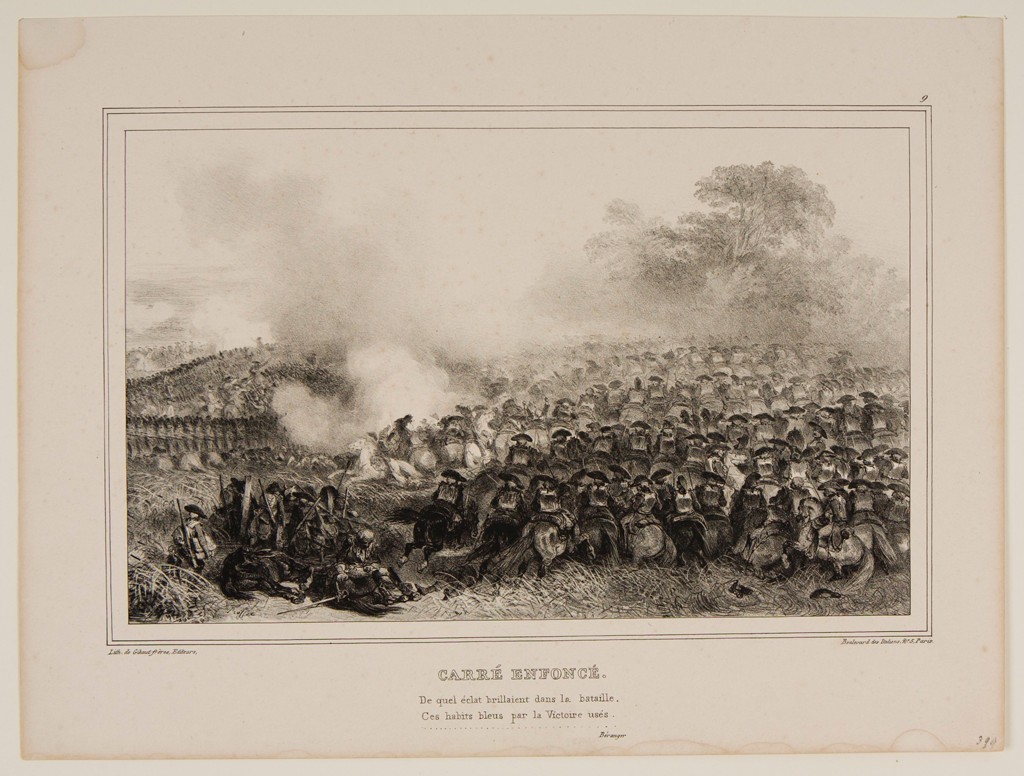1951-1953: Watson, Crick, Wilkins, and Franklin investigate the structure of DNA; the structure is eventually revealed to be an antiparallel double helix, with Watson and Crick publishing their notable paper in 1953 [196] [17]

Art Piece: Breakthrough, Denis-Auguste-Marie Raffet, 1835 [46]
Paper: Molecular Structure of Nucleic Acids: A Structure for Deoxyribose Nucleic Acid [196]
Although many of us would like to think that science as a field only consists of chivalry and respect, the actual truth is that science is also strife with competition [31] and sneaky people working to get an edge over others. Though Watson and Crick’s discovery of the structure of DNA being a double helix seems like this giant, heroic scientific accomplishment (and yes, it is a very important scientific feat), it is still important to remember all the people who contributed to Watson and Crick’s work as well. The discovery of the double helix was a long path, one which involved many besides just Watson and Crick — people like Maurice Wilkins [178] and Rosalind Franklin [17] were also incredibly relevant to the story, but are often left out in the pages of history. Building on the work done by Chargaff [54], that A paired with T and C with G, and wanting to also find the structure of DNA before Linus Pauling [110] did, “After [173] several failed attempts at model building, including their own ill-fated three-stranded version and one in which the bases were paired like with like (adenine with adenine, etc.), [Watson and Crick] achieved their break-through.” Considering [48] Chargaff’s Law and also being mindful of the nitrogen, carbon, hydrogen, and oxygen rings, Watson was able to figure out the structure of DNA, with Watson and Crick soon publishing their findings thereafter. This was a large paradigm shift, as we finally now had the structure of DNA. This allowed for more scientific accomplishments and breakthroughs in the future, building upon this paradigm shift. The artwork above [46], aptly titled “Breakthrough,” is relevant to Watson and Crick’s paradigm shift in many ways. Firstly, the print shows a breakthrough in what appears to be a war, a literal breakthrough in a battle line but also representative of the competition that Watson and Crick had to “break through” in order to elucidate the double helix of DNA. Much like the scene of competition and battle in the image above, Watson and Crick also had to compete with many of their contemporaries to make their discovery before others did, also showing a paradigm shift in how we think about science as a whole. Moreover, Watson’s book [173], The Double Helix, showed that scientists are just people, ones who also feel the pressures of competition and wanting things like increased job security. The scientific paper above [196], which is the original paper published by Watson and Crick is a seminal paper in science, fully showcasing this paradigm shift through the original experimentation, work, and words written and performed by Watson and Crick to elucidate the double helix.